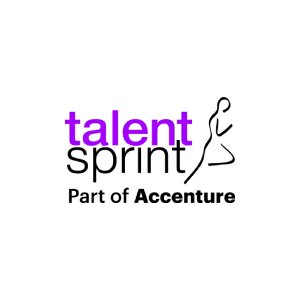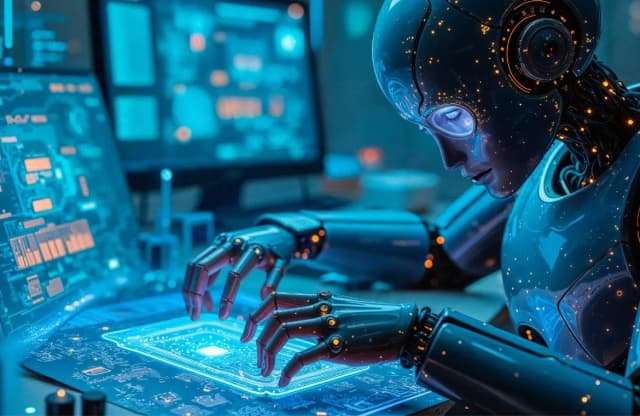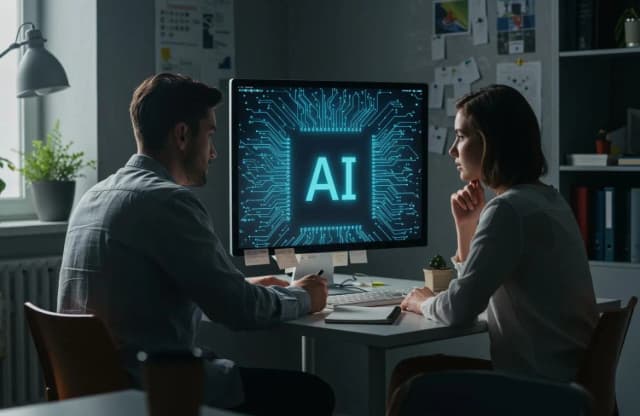What is the Main Goal of Generative AI? The Truth Behind the Buzz

Generative AI isn’t about machines taking over; it’s about machines learning to understand us better. The goal isn’t imitation, but augmentation: helping writers create faster, doctors analyze better, and citizens access services more fairly.
As Prime Minister Narendra Modi aptly stated,
"We are at the dawn of the AI age, with technology already reshaping economies and society as we know it."
Understanding generative AI's purpose becomes vital as the digital world keeps changing. This blog will explore generative AI's basics, objectives, real-world uses, benefits, and current challenges. This knowledge helps AI practitioners build expertise, tech leaders apply AI in their workflow, and professionals utilize these tools to advance their careers.
Understanding Generative AI
AI has been making headlines lately, but generative artificial intelligence stands out as something special. Let's take a closer look at the technical foundations that allow generative AI to create original content instead of just analyzing existing data.
In 2025, generative AI stands at the forefront of technological innovation, captivating industries and individuals alike. From crafting realistic images to composing music and generating human-like text, its capabilities seem boundless. Yet, amidst the excitement, a fundamental question arises: What is the main goal of generative AI?
The Main Goal of Generative AI

At its core, generative AI is designed to augment human creativity, enhance efficiency, and democratize access to information and services. It’s not about replacing human thought, but rather about automating and amplifying it.
Generative AI does more than just create new things. It's changing how machines help humans be creative and productive. These AI systems want to make original content, handle complex tasks, and provide solutions that get better as people use them.
Creating new content from learned patterns
Generative AI's main goal is to study data patterns and create brand-new content. This content looks similar to what it learned from but never copies it directly. Unlike older AI that just sorts things or makes predictions, generative AI creates fresh outputs in many forms - text, images, music, and code.
The magic happens through smart algorithms like Generative Adversarial Networks (GANs), Variational Autoencoders (VAEs), and Transformer models. These tools spot key patterns in huge datasets. They create unique outputs that keep the core features of their training data while adding something new.
These systems don't just copy what they've seen. They come up with completely new ideas that weren't in their original training. This makes them much better than older AI systems because they create rather than just copy things.
For instance, with more than 20 official languages and hundreds of dialects, India boasts a vast linguistic diversity. Large datasets in Indian languages are being used to train generative AI models like Krutrim and Sarvam AI to produce content autonomously.
Automating creative and cognitive tasks
Generative AI also takes on tasks that used to be human-only territory. These systems shine at:
- Content creation: Making text, images, audio, and video at scale
- Creative assistance: Helping with creative blocks by showing new viewpoints
- Cognitive processing: Finding patterns and insights in big data
- Decision support: Giving data-backed suggestions to help leaders decide
These tools work alongside humans instead of replacing them. They boost what people can do, so professionals can tackle more important work while AI handles routine tasks. McKinsey's research shows that developers who use these tools are 25% to 30% more likely to finish tough projects on time.
For example, Radiology departments at hospitals like Apollo and AIIMS are incorporating generative AI into their systems, which analyze scans and produce diagnostic findings. Once taking hours of a radiologist's time, these operations are now highly accurately automated by AI that has been trained on enormous datasets of imaging and patient information from India.
Enabling real-time, adaptive outputs
The most exciting part is how generative AI creates solutions that adapt to changing needs. These systems never get tired and work 24/7 on everything from helping customers to making content.
Real-time AI creates content instantly, running chatbots and creative tools. Users get personalized experiences that match their needs right away.
The next big thing is adaptive AI that learns from working with humans. Each interaction improves these systems' ability to match users' needs through constant feedback.
By focusing on these three things, making original content, handling complex tasks, and adapting to needs, generative AI is changing how we think about creativity, productivity, and problem-solving in every industry.
For example, Platforms like Writesonic and Peppertype.ai are being used by Indian entrepreneurs and digital agencies to create real-time, adaptive ad content, email campaigns, and social media postings. These platforms constantly optimize content by learning from user interaction data and continuing marketing trends, which is essential in today's multilingual, fast-paced digital economy.
Tools and Applications of Generative AI

Generative AI tools keep emerging in multiple domains. Each tool shows unique capabilities that showcase the technology's versatility. These platforms show how generative AI's main goals demonstrate practical applications that professionals and organizations can use.
Text generation
Text generation tools have evolved since ChatGPT debuted in November 2022. ChatGPT uses OpenAI's GPT models to answer questions, create content, and follow instructions in many languages.
Image generation
DALL·E and Midjourney lead the pack as AI image generators. These tools create images from text prompts through diffusion - a process that begins with random noise and refines it to match your description.
Audio and music
Audio generation tools reshape how we create music. Users can adjust tempo and length, making it perfect for content creators.
Video creation: Synthesia, Pictory
Modern video creation does not require cameras, actors, or studios. The latest platform converts blog posts, PowerPoint presentations, and web pages into engaging visual content with automatic captions.
Benefits of Generative AI
Generative AI brings real business value that goes well beyond new technology. Companies that use this technology see real improvements in many areas of their operations. They gain competitive edges through automation, better access, and improved human capabilities.
Enhancing productivity and efficiency
Generative AI boosts workplace performance significantly. It can improve productivity compared to non-AI users. Knowledge workers create content faster, get automatic summaries, and solve problems better. The improvement is even more striking for workers who score in the bottom half of skills tests.
Operating around the clock
Human teams need breaks and rest periods. Generative AI systems don't. They work non-stop and provide continuous service. This round-the-clock availability works great for customer support teams.
Enabling business growth without extra resources
Companies can grow their operations with generative AI without hiring more people or spending more money. This lets companies move their talent to more valuable work. Teams can launch new projects faster and keep their service quality high without needing traditional resources.
Enhancing human creativity
In stark contrast to fears about job replacement, generative AI helps humans be more creative. Studies show that people who use generative AI write stories that are more creative, better written, and more enjoyable. Less creative writers improved the most. AI handles the routine work while humans focus on strategy and innovation.
Challenges to Generative AI
Generative AI shows remarkable capabilities, yet organizations and practitioners face substantial hurdles before they can discover its full potential. These challenges affect how companies implement AI, use it ethically, and achieve business results.
Bias in training data and outputs
Training data biases are magnified in generative AI systems. Such biases create unfair treatment and discriminatory outcomes that affect marginalized groups the most.
Intellectual property and plagiarism concerns
Generative AI's relationship with intellectual property remains disputed. Most jurisdictions now refuse to protect AI-generated content, while works combining human and AI input raise complex copyright questions.
Lack of transparency in decision-making
Generative AI models work like "black boxes," which makes understanding their outputs challenging. This lack of clarity creates problems with regulatory compliance, fairness assessments, and bias detection.
Conclusion
The main goal of Generative AI is not simply to generate content, but to replicate and extend human creativity and cognitive capabilities across various domains. Whether it’s producing natural language, generating images, automating business processes, or solving complex problems, Generative AI aims to enhance decision-making, drive innovation, and increase operational efficiency.
So, to truly harness the potential of this transformative technology, building a solid understanding is crucial. A Certification Programme in Generative AI can be an ideal starting point for, Working professionals aiming to stay ahead by applying Generative AI for smarter decision-making and career progression
Tech professionals and leaders who wants to understand generative AI's capabilities and limitations in today's competitive digital world. Generative AI and Prompt Engineering Program can be an apt choice for those willing to learn and accept both its potential and current constraints and how to make informed decisions about implementing these tools in their organization.
To truly utilise the power of this technology, understanding how to communicate effectively with AI is essential. A Prompt Engineering course can help learners and professionals to master the art of crafting precise, strategic prompts that yield accurate and creative results.
Frequently Asked Questions
Q1. What is the primary goal of generative AI?
The main goal of generative AI is to create new, original content by learning from existing data patterns. It aims to produce unique outputs across various media, such as text, images, audio, and code, without simply duplicating its training data.
Q2. What is Generative AI used for?
Generative AI is used to create content such as text, images, music, or code by learning patterns from data, enabling automation, creativity, and personalization across various industries.
Q3. What is the goal of generative AI?
At its core, generative AI is designed to augment human creativity, enhance efficiency, and democratize access to information and services. Its goal is not to replace human thought but rather to automate and amplify it.

TalentSprint
TalentSprint is a leading deep-tech education company. It partners with esteemed academic institutions and global corporations to offer advanced learning programs in deep-tech, management, and emerging technologies. Known for its high-impact programs co-created with think tanks and experts, TalentSprint blends academic expertise with practical industry experience.



